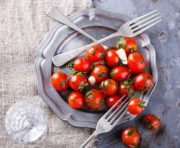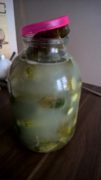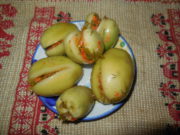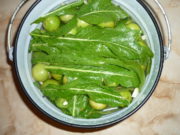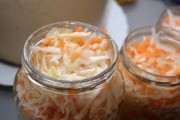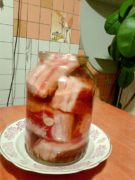The best assorted recipe: pickled cucumbers with tomatoes
Pickling vegetables for the winter requires having a large amount of containers. There are not always so many barrels or buckets in the house, and you have to choose what exactly to salt. These pangs of choice can be avoided by salting the assortment. Pickled cucumbers and tomatoes sit perfectly next to each other, they are saturated with each other’s taste, and saturate the brine with more interesting notes.
Most people recommend salting cucumbers and tomatoes in wooden barrels. Of course, this is an ideal container, but how many people have such barrels? Nowadays, the most convenient containers are plastic buckets with lids, which are suitable for storing food products.
They will not give a pleasant woody aroma to the pickles, but the vegetables will not turn sour, as sometimes happens with pickles in enamel buckets.
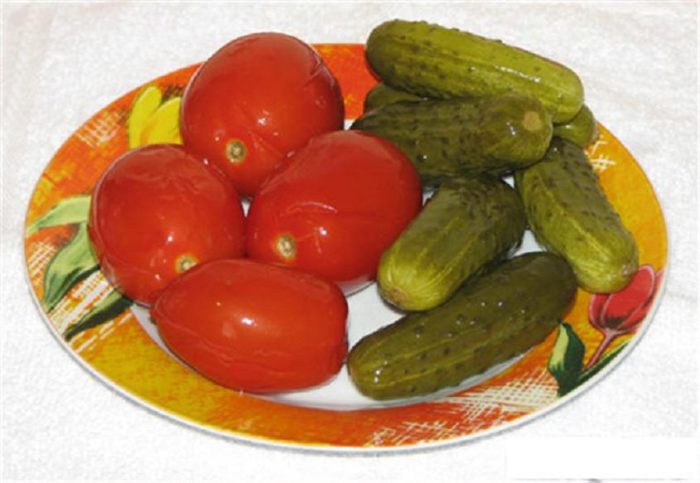
For pickling, you can take cucumbers of any size. If for pickling or quick pickling it is better to take cucumbers of the same size, in this case it does not matter. The pickling process is very long, and during this time even the largest cucumbers will have time to salt.
As for tomatoes, it is better to take green, or slightly unripe and dense fruits for pickling. If the tomatoes are overripe and too soft, they will simply fall apart during the pickling process.
The ratio of assorted tomatoes and cucumbers can be absolutely anything, and this does not affect the pickling method in any way. Just weigh the prepared vegetables, wash them, and let's start pickling.
What else will you need for pickling assorted vegetables (for one bucket, approximately 7 kg of vegetables):
- 10 horseradish leaves;
- 3 heads of garlic;
- 3 pods of hot pepper;
- 10 stems of dill, along with umbrellas of inflorescences;
Blackcurrant leaves, cherries, marjoram, tarragon, basil - optional. The more aromatic the brine, the tastier the assorted cucumbers and tomatoes will be.
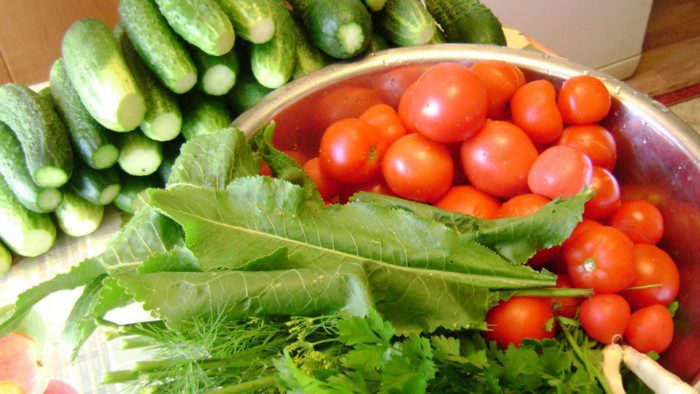
Place about a third of the prepared spices at the bottom of the container, and lay out the cucumbers and tomatoes, sprinkling them with the same herbs and cloves of garlic. Do not fill the container to the top with vegetables. They should be completely covered with brine and float freely in the container. When you have laid out all the vegetables, cover them on top with horseradish leaves and prepare the brine at the rate of:
- 700 grams of salt per 10 liters of water.
There is no need to boil the brine, but you can warm it up so that the salt dissolves faster.
Pour the prepared brine over the cucumbers and tomatoes and place a plate or wooden circle on top to prevent them from floating up.
To add a “barrel” flavor, you can put several oak chips, previously scalded with boiling water, in a bucket.

Now, the assortment should begin to ferment. The fermentation process goes better at a temperature of +20 degrees, and it is at this time that you need to make sure that the brine does not run away. During fermentation, the brine actively foams, and this foam must be skimmed off.
3-4 days after the start of active fermentation, the container with the assortment can be transferred to the cellar, or another cool place, for quiet fermentation.
This method of pickling cucumbers and tomatoes involves long-term storage for the winter, but no one is stopping you from trying the assortment after two weeks. The longer cucumbers and tomatoes are fermented, the more spicy and pungent their taste will become.
Watch the video, a quick way to ferment assorted cucumbers and tomatoes:


